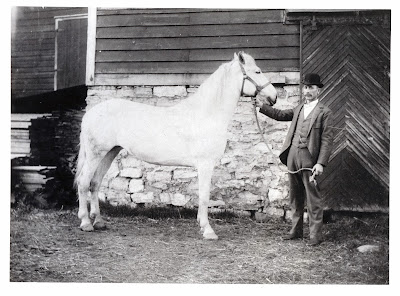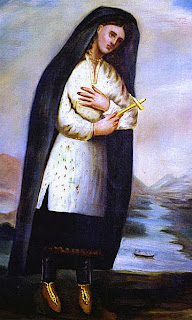“It is Saturday -- scrubbing day. [. . . ] Wooden-shod servants are splashing and mopping and soaking and rubbing every exterior surface, horizontal and perpendicular,” wrote John Higinbotham in the 1910 edition of Three Weeks in Holland and Belgium. The scene must have seemed quaint and picturesque to the foreign tourist upon his arrival in Rotterdam a hundred years ago. He continues, “Thrift, cleanliness and a high average of comfort seem to abound.”
The casual tourist taking notes for a travel book probably
did not stop to ponder what lay behind the stereotypical image he painted of
cleanliness, comfort and thrift. But if one knew where to look and what
questions to ask, a more discerning traveler may have looked behind the scenes
to discover what (or who) made this picture look so pleasant.
 |
| Hendrina and Elizabeth Daams ca. 1900 |
In fact, both of my grandparents and their families were
members of the working class in turn-of-the-twentieth-century Netherlands,
and their efforts, along with those of their siblings and acquaintances, helped
contribute to the pleasant picture of comfort and cleanliness. In an earlier
post, we learned how Grandma Elizabeth Daams and her sister Hendrina left
school and went out to work as domestic servants in Loosdrecht after their
father died. Elizabeth worked for several
wealthy families for a period of ten years before being able to save enough
money to emigrate to the United
States when she and Barend Vanden Bergh
married.
In the nearby town of s’Graveland, Grandpa Vanden Bergh’s
brother Jacob worked in one of the many laundries or bleaching establishments,
as well as at least one relative of Grandma Elizabeth’s, known as Tante Ger
(“Aunt Gertie”). According to an undated booklet that my mother received from a
cousin in the Netherlands
(“Bleek, Bleeker, Bleekst,” by J.A. Hendriks, Jr.), as early as 1831 there were
as many as 42 laundries in s’Graveland.
The name “s’Graveland” can be translated as “the Count’s
Land,” and indeed in those early days, the social system resembled a feudal
system. The village consisted of about ten large estates owned by members of
the ruling class from Amsterdam,
the “regenten.” This system was already in place in the seventeenth century,
and continued until the 1920’s.
Living conditions of the working people were very difficult
a hundred years ago. As noted by Mom’s cousin Jasper in the notebook he sent
her, “Tante Ger” recounted how she had to work from five o'clock in the morning
until ten or eleven o"clock at night, especially in the summer.
 |
| Country estate in s'Graveland ca. 1910 |
Another Vanden Bergh ancestor (my great-grandfather) worked
as a gardener on one of the estates owned by the feudal gentry. There
were at least twelve employees in the mansion and garden. In the summer, he
also worked from 6:00 AM until 9:00 or sometimes 11:00 in the evening. The only
time he had to cultivate his own garden, where the family grew potatoes and
vegetables, was between 4:00 and 6:00 AM. Sometimes to earn a few extra cents,
he would take over night watch duties from other people.
Of course, much has changed since those early days, with the
mechanization of the laundry business as well as other labor-saving devices and
improved working conditions due to the labor movement. Nowadays, most of us can
pursue leisure activities while machines wash and dry our clothes.






